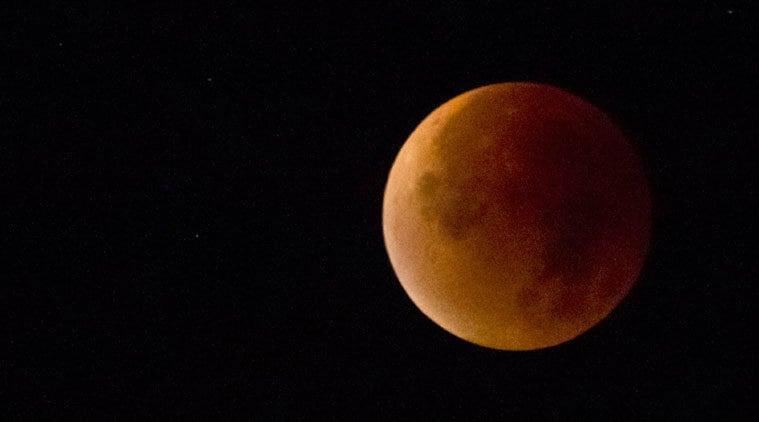Lunar Eclipse 2018: What is Chandra Grahan and how it occurs?
Chandra Grahan or Lunar Eclipse 2018 India: This occurrence of eclipse does not happen every time the moon orbits the earth because the orbital planes of the Earth and moon are only less different.

Chandra Grahan or Lunar Eclipse 2018 India: Here’s all you need to know about the blood moon. (Image: AP)
Chandra Grahan or Lunar Eclipse 2018 India: The world will witness the longest Lunar eclipse or Chandra Grahan on July 27. A lunar eclipse occurs when the Earth passes between the sun and the moon, casting the moon into shadow. The moon is called “blood moon” due to its scarlet red colour. When the moon passes between earth and sun, blocking the sun’s light, the moon appears like a red ball.
Unlike the solar eclipse, lunar eclipses are less common with a maximum of three occurring every year. However, it doesn’t necessarily occur every year. Each lunar eclipse is visible from more than half the Earth.
What makes this eclipse rare?
This year, the world will witness the longest lunar eclipse of the century. The moon will be the earth’s shadow for four hours and totally eclipsed for one hour and 43 minutes, which is just short of the theoretical limit of a lunar eclipse. The reason behind it is that this time, the moon will be passing through the centre of the Earth’s shadow.
How Chandra Grahan or Lunar Eclipse occurs?
This occurrence of eclipse does not happen every time the moon orbits the earth because the orbital planes of the Earth and moon are only less different. The two intersect at an angle of around five degrees. During the lunar eclipse, the moon will be at the farthest distance from the earth. A red light will be reflected at the moon’s surface, thus making it look magnificent red in colour.
For all the latest Lifestyle News, download Indian Express App
© IE Online Media Services Pvt Ltd






















No hay comentarios:
Publicar un comentario